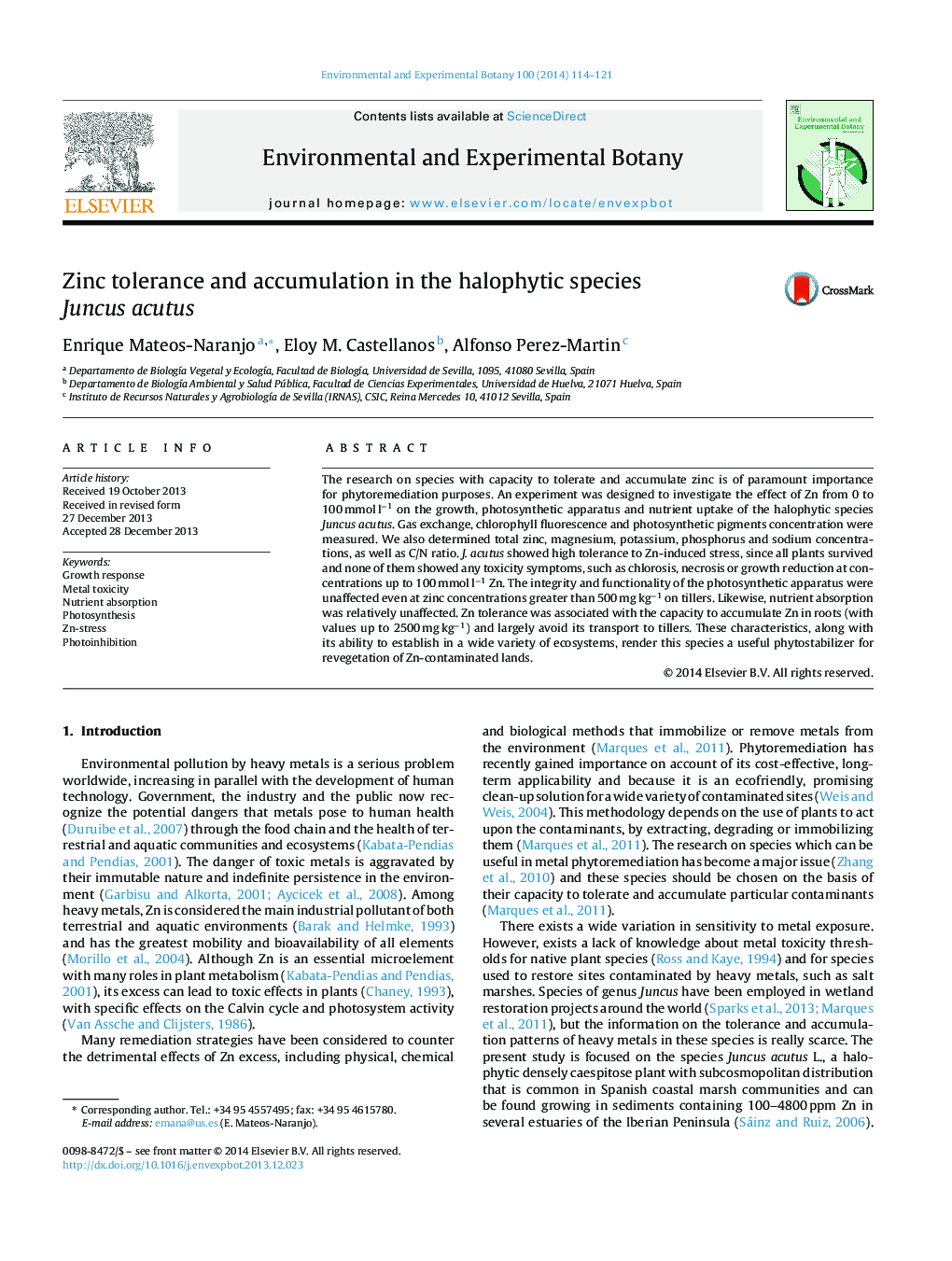| Article ID | Journal | Published Year | Pages | File Type |
|---|---|---|---|---|
| 4554384 | Environmental and Experimental Botany | 2014 | 8 Pages |
Abstract
The research on species with capacity to tolerate and accumulate zinc is of paramount importance for phytoremediation purposes. An experiment was designed to investigate the effect of Zn from 0 to 100 mmol lâ1 on the growth, photosynthetic apparatus and nutrient uptake of the halophytic species Juncus acutus. Gas exchange, chlorophyll fluorescence and photosynthetic pigments concentration were measured. We also determined total zinc, magnesium, potassium, phosphorus and sodium concentrations, as well as C/N ratio. J. acutus showed high tolerance to Zn-induced stress, since all plants survived and none of them showed any toxicity symptoms, such as chlorosis, necrosis or growth reduction at concentrations up to 100 mmol lâ1 Zn. The integrity and functionality of the photosynthetic apparatus were unaffected even at zinc concentrations greater than 500 mg kgâ1 on tillers. Likewise, nutrient absorption was relatively unaffected. Zn tolerance was associated with the capacity to accumulate Zn in roots (with values up to 2500 mg kgâ1) and largely avoid its transport to tillers. These characteristics, along with its ability to establish in a wide variety of ecosystems, render this species a useful phytostabilizer for revegetation of Zn-contaminated lands.
Related Topics
Life Sciences
Agricultural and Biological Sciences
Ecology, Evolution, Behavior and Systematics
Authors
Enrique Mateos-Naranjo, Eloy M. Castellanos, Alfonso Perez-Martin,
